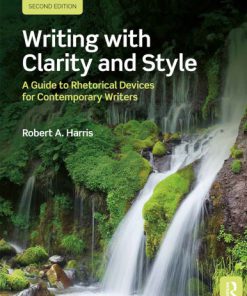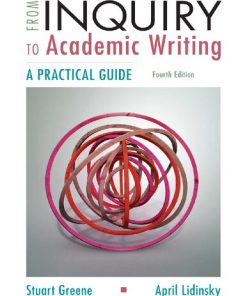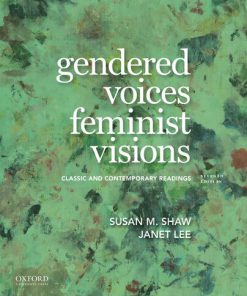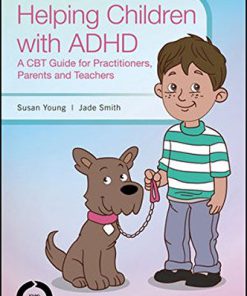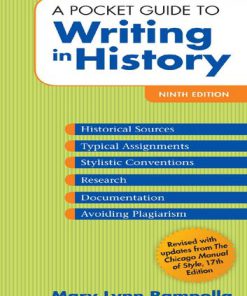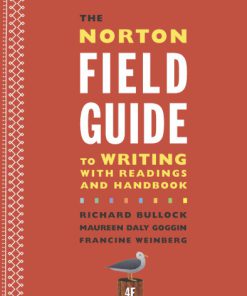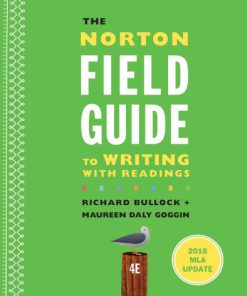Evergreen A Guide to Writing with Readings 11 Edition by Susan Fawcett ISBN 1337097048 9781337097048
$50.00 Original price was: $50.00.$25.00Current price is: $25.00.
Evergreen A Guide to Writing with Readings 11 Edition by Susan Fawcett – Ebook PDF Instant Download/Delivery: 1337097048 ,9781337097048
Full download Evergreen A Guide to Writing with Readings 11 Edition after payment

Product details:
ISBN 10: 1337097048
ISBN 13: 9781337097048
Author: Susan Fawcett
Evergreen A Guide to Writing with Readings 11 Edition Table of contents:
Unit 1. Getting Started
Chapter 1. Exploring the Writing Process
A. The Writing Process
The Writing Process
B. Subject, Audience, and Purpose
Key Terms
Chapter 2. Prewriting to Generate Ideas
A. Freewriting
Focused Freewriting
B. Brainstorming
C. Clustering
D. Asking Questions
The Reporter’s Six Questions
Ask Your Own Questions
E. Keeping a Journal
Key Terms
Unit 1: Writers’ Workshop. Using One or Two of Your Five Senses, Describe a Place
Unit 2. Discovering the Paragraph
Chapter 3. The Process of Writing Paragraphs
A. Defining and Looking at the Paragraph
Topic Sentence and Body
B. Narrowing the Topic and Writing the Topic Sentence
Narrowing the Topic
Writing the Topic Sentence
C. Generating Ideas for the Body
D. Selecting and Dropping Ideas
E. Arranging Ideas in a Plan or an Outline
F. Writing and Revising the Paragraph
Writing the First Draft
Revising
Revising for Support
Revising for Unity
Revising with Peer Feedback
Writing the Final Draft
Proofreading
Key Terms
Chapter 4. Achieving Coherence
A. Coherence Through Order
Time Order
Space Order
Order of Importance
B. Coherence Through Related Sentences
Repetition of Important Words and Pronouns
Synonyms and Substitutions
Transitional Expressions
Key Terms
Unit 2: Writers’ Workshop. Discuss the Pressures of Living in Two Worlds
Unit 3. Developing the Paragraph
Chapter 5. Illustration
A. Illustration
Topic Sentence
Paragraph and Plan
Transitional Expressions
Key Terms
Chapter 6. Narration
A. Narration
Topic Sentence
Paragraph and Plan
Transitional Expressions
Key Terms
Chapter 7. Description
A. Description
Topic Sentence
Paragraph and Plan
Transitional Expressions
Key Terms
Chapter 8. Process
A. Process
Topic Sentence
Paragraph and Plan
Transitional Expressions
Key Terms
Chapter 9. Definition
A. Single-Sentence Definitions
Definition by Synonym
Definition by Class
Definition by Negation
B. The Definition Paragraph
Topic Sentence
Paragraph and Plan
Key Terms
Chapter 10. Comparison and Contrast
A. The Contrast Paragraph and the Comparison Paragraph
Topic Sentence
Paragraph and Plan
Transitional Expressions
B. The Comparison and Contrast Paragraph
Working Through the Comparison and Contrast Paragraph
Key Terms
Chapter 11. Classification
A. Classification
Topic Sentence
Paragraph and Plan
Transitional Expressions
Key Terms
Chapter 12. Cause and Effect
A. Cause and Effect
Topic Sentence
Paragraph and Plan
Problems to Avoid in Cause and Effect Writing
Transitional Expressions
Key Terms
Chapter 13. Persuasion
A. Persuasion
Topic Sentence
Paragraph and Plan
Transitional Expressions
Methods of Persuasion
Considering the Audience
Key Terms
Unit 3: Writers’ Workshop. Give Advice to College Writers
Unit 4. Writing the Essay
Chapter 14. The Process of Writing an Essay
A. Looking at the Essay
B. Writing the Thesis Statement
Narrowing the Topic
Writing the Thesis Statement
C. Generating Ideas for the Body
D. Organizing Ideas into an Outline
E. Ordering and Linking Paragraphs in the Essay
Ordering Paragraphs
Linking Paragraphs
F. Writing and Revising Essays
Writing the First Draft
Revising and Proofreading
Proofreading and Writing the Final Draft
Key Terms
Chapter 15. The Introduction, the Conclusion, and the Title
A. The Introduction
B. The Conclusion
C. The Title
Chapter 16. Types of Essays, Part 1
A. The Illustration Essay
Planning and Writing the Illustration Essay
B. The Narrative Essay
Planning and Writing the Narrative Essay
C. The Descriptive Essay
Planning and Writing the Descriptive Essay
D. The Process Essay
Planning and Writing the Process Essay
E. The Definition Essay
Planning and Writing the Definition Essay
Key Terms
Chapter 17. Types of Essays, Part 2
A. The Comparison and the Contrast Essay
Planning and Writing the Comparison and Contrast Essay
B. The Classification Essay
Planning and Writing the Classification Essay
C. The Cause and Effect Essay
Planning and Writing the Cause and Effect Essay
D. The Persuasive Essay
Planning and Writing the Persuasive Essay
Key Terms
Chapter 18. Summarizing, Quoting, and Avoiding Plagiarism
A. Avoiding Plagiarism
B. Writing a Summary
Preparing to Write a Summary
C. Using Direct and Indirect Quotation (Paraphrase)
Key Terms
Chapter 19. Strengthening an Essay with Research
A. Improving an Essay with Research
B. Finding and Evaluating Outside Sources: Using the Library and Searching the Internet
Doing Research at the Library
Doing Research on the Internet
C. Adding Sources to Your Essay and Documenting Them Correctly Using MLA Style
Inside Your Essay: Summarize or Quote and Give Credit
At the End of Your Essay: List Works Cited
D. Adding Sources to Your Essay and Documenting Them Correctly Using APA Style
Inside Your Essay: Summarize or Quote and Give Credit
At the End of Your Essay: List References
Bias-Free Language
E. MLA versus APA: A Quick Reference
Suggested Topics for Research Papers
Key Terms
Chapter 20. Writing Under Pressure: The Essay Examination
A. Budgeting Your Time
B. Reading and Understanding the Essay Question
C. Choosing the Correct Paragraph or Essay Pattern
D. Writing the Topic Sentence or the Thesis Statement
Unit 4: Writers’ Workshop. Analyze a Social Problem
Unit 5. Improving Your Writing
Chapter 21. Revising for Consistency and Parallelism
A. Consistent Tense
B. Consistent Number and Person
Consistency of Number
Consistency of Person
C. Parallelism
Key Terms
Chapter 22. Revising for Sentence Variety
A. Mix Long and Short Sentences
B. Use a Question, a Command, or an Exclamation
The Question
The Command and the Exclamation
C. Vary the Beginnings of Sentences
Begin with an Adverb
Begin with a Prepositional Phrase
D. Vary Methods of Joining Ideas
Join Ideas with a Compound Predicate
Join Ideas with an -ing Modifier
Join Ideas with a Past Participial Modifier
Join Ideas with an Appositive
Join Ideas with a Relative Clause
E. Avoid Misplaced and Confusing Modifiers
F. Review and Practice
Key Terms
Chapter 23. Revising for Language Awareness
A. Exact Language: Avoiding Vagueness
B. Concise Language: Avoiding Wordiness
C. Fresh Language: Avoiding Triteness
D. Figurative Language: Similes and Metaphors
Key Terms
Chapter 24. Putting Your Revision Skills to Work
A. Putting Your Revision Skills to Work
Writing Sample 1
Writing Sample 2
Unit 5: Writers’ Workshop. Examine Something That Isn’t What It Appears to Be
Unit 6. Reviewing the Basics
Chapter 25. Proofreading to Correct Your Personal Error Patterns
A. Identifying and Tracking Your Personal Error Patterns
Learn Your Error Patterns
Create a Personal Error Patterns Chart
B. Proofreading Strategies
Key Terms
Chapter 26. The Simple Sentence
A. Defining and Spotting Subjects
B. Spotting Prepositional Phrases
C. Defining and Spotting Verbs
Action Verbs
Linking Verbs
Verbs of More Than One Word—Helping Verbs
Key Terms
Chapter 27. Coordination and Subordination
A. Coordination
B. Subordination
C. Semicolons
D. Conjunctive Adverbs
E. Review
Key Terms
Chapter 28. Avoiding Sentence Errors
A. Avoiding Run-Ons and Comma Splices
B. Avoiding Fragments
Dependent Clause Fragments
Relative Clause Fragments
-ing Fragments
Prepositional Phrase Fragments
Appositive Phrase Fragments
Infinitive Phrase Fragments
Key Terms
Chapter 29. Present Tense (Agreement)
A. Defining Subject-Verb Agreement
B. Three Troublesome Verbs in the Present Tense: To Be, To Have, To Do
C. Special Singular Constructions
D. Separation of Subject and Verb
E. Sentences Beginning with There and Here
F. Agreement in Questions
G. Agreement in Relative Clauses
Chapter 30. Past Tense
A. Regular Verbs in the Past Tense
B. Irregular Verbs in the Past Tense
C. A Troublesome Verb in the Past Tense: To Be
D. Troublesome Pairs in the Past Tense: Can/Could, Will/Would
Key Terms
Chapter 31. The Past Participle
A. Past Participles of Regular Verbs
B. Past Participles of Irregular Verbs
C. Using the Present Perfect Tense
D. Using the Past Perfect Tense
E. Using the Passive Voice (To Be and the Past Participle)
F. Using the Past Participle as an Adjective
Key Terms
Chapter 32. Nouns
A. Defining Singular and Plural
B. Signal Words: Singular and Plural
C. Signal Words with of
Key Terms
Chapter 33. Pronouns
A. Defining Pronouns and Antecedents
B. Making Pronouns and Antecedents Agree
1. Indefinite Pronouns
2. Special Singular Antecedents
3. Collective Nouns
C. Referring to Antecedents Clearly
D. Special Problems of Case
1. Case in Compound Constructions
2. Case in Comparisons
3. Use of Who (or Whoever) and Whom (or Whomever)
E. Using Pronouns with -self and -selves
Key Terms
Chapter 34. Prepositions
A. Working with Prepositional Phrases
In/On for Time
In/On for Place
B. Prepositions in Common Expressions
Chapter 35. Adjectives and Adverbs
A. Defining and Using Adjectives and Adverbs
B. The Comparative and the Superlative
C. A Troublesome Pair: Good/Well
Key Terms
Chapter 36. The Apostrophe
A. The Apostrophe for Contractions
B. The Apostrophe for Ownership
C. Special Uses of the Apostrophe
Key Terms
Chapter 37. The Comma
A. Commas for Items in a Series
B. Commas with Introductory Phrases, Transitional Expressions, and Parentheticals
C. Commas for Appositives
D. Commas with Nonrestrictive and Restrictive Clauses
E. Commas for Dates and Addresses
F. Minor Uses of the Comma
Key Terms
Chapter 38. Mechanics
A. Capitalization
B. Titles
C. Direct Quotations
D. Minor Marks of Punctuation
The Colon
Parentheses
The Dash
Key Terms
Chapter 39. Putting Your Proofreading Skills to Work
A. Putting Your Proofreading Skills to Work
Unit 6: Writers’ Workshop. Adopt a New Point of View
Unit 7. Strengthening Your Spelling
Chapter 40. Spelling
A. Suggestions for Improving Your Spelling
Some Tips for Improving Your Spelling
B. Computer Spell Checkers
C. Spotting Vowels and Consonants
D. Doubling the Final Consonant (in Words of One Syllable)
E. Doubling the Final Consonant (in Words of More Than One Syllable)
F. Dropping or Keeping the Final e
G. Changing or Keeping the Final y
H. Adding -s or -es
I. Choosing ie or ei
J. Spelling Lists
Commonly Misspelled Words
Personal Spelling List
Chapter 41. Look-Alikes/Sound-Alikes
A. Look-Alikes/Sound-Alikes
Personal Look-Alikes/Sound-Alikes List
Unit 7: Writers’ Workshop. Discuss a Time When You Felt Blessed
Unit 8. Reading Strategies and Selections
Chapter 42. Reading Strategies for Writers
A. Active Reading
B. An Annotated Essay
C. Specific Reading Strategies
SQ3R: Survey, Question, Read, Recite, Review
REAP: Read, Encode, Annotate, Ponder
D. Connecting Reading and Writing
Chapter 43. Reading Selections
Section Content
Chapter 43. Multitasking or Mass ADD?
Language Awareness and Vocabulary Questions
Language Awareness and Vocabulary Questions
Comprehension and Analysis Questions
Writing Assignments
Chapter 43. How to Make a No. 1 App with $99 and Three Hours of Work
Language Awareness and Vocabulary Questions
Language Awareness and Vocabulary Questions
Comprehension and Analysis Questions
Writing Assignments
Chapter 43. A Brother’s Murder
Language Awareness and Vocabulary Questions
Language Awareness and Vocabulary Questions
Comprehenension and Analysis Questions
Writing Assignments
Chapter 43. I Freed Myself When I Embraced My Locks
Language Awareness and Vocabulary Questions
Language Awareness and Vocabulary Questions
Comprehension and Analysis Questions
Writing Assignments
Chapter 43. Driving While Stupid
Language Awareness and Vocabulary Questions
Language Awareness and Vocabulary Questions
Comprehension and Analysis Questions
Writing Assignments
Chapter 43. When Greed Gives Way to Giving
Language Awareness and Vocabulary Questions
Language Awareness and Vocabulary Questions
Comprehension and Analysis Questions
Writing Assignments
Chapter 43. Everything You Need to Know About Generation Z
Language Awareness and Vocabulary Questions
Language Awareness and Vocabulary Questions
Comprehension and Analysis Questions
Writing Assignments
Chapter 43. Americans Are Having Dogs Instead of Babies
Language Awareness and Vocabulary Questions
Language Awareness and Vocabulary Questions
Comprehension and Analysis Questions
Writing Assignments
Chapter 43. Good Grammar Gets the Girl
Language Awareness and Vocabulary Questions
Language Awareness and Vocabulary Questions
Comprehension and Analysis Questions
Writing Assignments
Chapter 43. On the Rez
Language Awareness and Vocabulary Questions
Language Awareness and Vocabulary Questions
Comprehension and Analysis Questions
Writing Assignments
Chapter 43. Four Types of Courage
Language Awareness and Vocabulary Questions
Language Awareness and Vocabulary Questions
Comprehension and Analysis Questions
Writing Assignments
Chapter 43. Book War
Language Awareness and Vocabulary Questions
Language Awareness and Vocabulary Questions
Comprehension and Analysis Questions
Writing Assignments
Chapter 43. A Risk-Free Life
Language Awareness and Vocabulary Questions
Language Awareness and Vocabulary Questions
Comprehension and Analysis Questions
Writing Assignments
Chapter 43. The Case for Torture
Language Awareness and Vocabulary Questions
Language Awareness and Vocabulary Questions
Comprehension and Analysis Questions
Writing Assignments
Chapter 43. Mandatory Student Volunteerism Benefits Everyone Involved
Language Awareness and Vocabulary Questions
Language Awareness and Vocabulary Questions
Comprehension and Analysis Questions
Writing Assignments
Chapter 43. Arab Bloggers: A Blessed Generation?
Language Awareness and Vocabulary Questions
Language Awareness and Vocabulary Questions
Comprehension and Analysis Questions
Writing Assignments
Chapter 43. Preparedness 101: Zombie Apocalypse
Language Awareness and Vocabulary Questions
Language Awareness and Vocabulary Questions
Comprehension and Analysis Questions
Writing Assignments
Chapter 43. Robots Will Steal Our Jobs, But They’ll Give Us New Ones
Language Awareness and Vocabulary Questions
Language Awareness and Vocabulary Questions
Comprehension and Analysis Questions
Writing Assignments
Chapter 43. Motivation
Language Awareness and Vocabulary Questions
Language Awareness and Vocabulary Questions
Comprehension and Analysis Questions
Writing Assignments
MindTap Only: Vocabulary Skills
Chapter 44. Vocabulary Skills
A. Using a Dictionary
B. Synonyms
C. Context Clues
Context Clue: Definition
Context Clue: Explanation
Context Clue: Example
Context Clue: Contrast
Additional Help and Practice for ESL/ELL Students
Thematic Index of the Reading Selections
Rhetorical Index
People also search for Evergreen A Guide to Writing with Readings 11 Edition:
evergreen a guide to writing with readings 11th edition pdf
evergreen a guide to writing with readings answer key
evergreen a guide to writing with readings pdf
reading guides examples
Tags:
Susan Fawcett,Evergreen,Writing with Readings
You may also like…
Reference - Writing
dictionaries & phrasebooks
From Inquiry to Academic Writing A Practical Guide 4th Edition by Stuart 1319071244 9781319071240
Poetry - American Poetry
Politics & Philosophy - General & Miscellaneous Philosophy
Philosophy: A Text with Readings 13th Edition Manuel Velasquez
Politics & Philosophy - Social Sciences
Gendered Voices, Feminist Visions: Classic and Contemporary Readings 7th Edition Susan M. Shaw
Relationships & Lifestyle - Psychological Self-Help
Reference - Writing
A Pocket Guide to Writing in History Ninth Edition Mary Lynn Rampolla
Reference - Writing
The Norton Field Guide to Writing with Readings and Handbook Richard Bullock
Reference - Writing
The Norton Field Guide to Writing with Readings Richard Bullock




